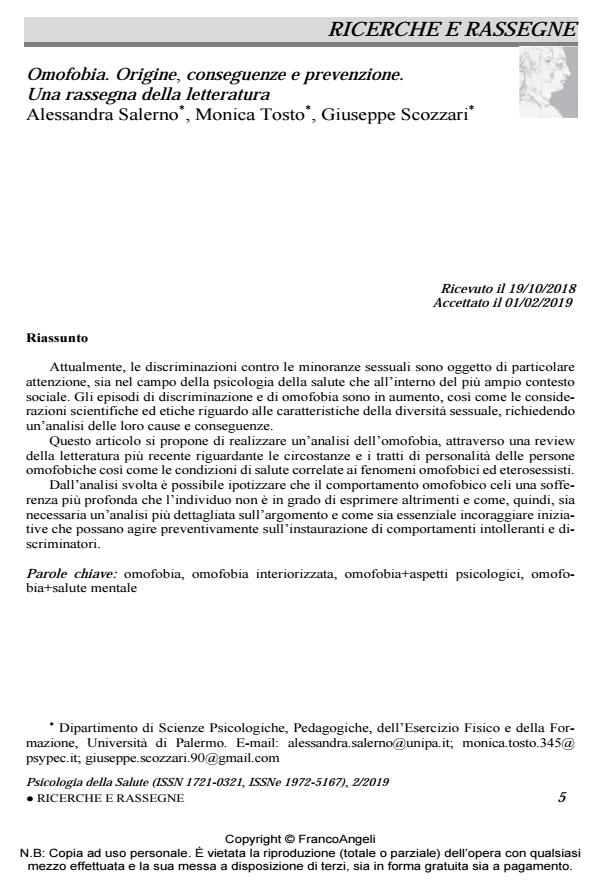Omofobia. Origine, conseguenze e prevenzione. Una rassegna della letteratura
Titolo Rivista PSICOLOGIA DELLA SALUTE
Autori/Curatori Alessandra Salerno, Monica Tosto, Giuseppe Scozzari
Anno di pubblicazione 2019 Fascicolo 2019/2
Lingua Italiano Numero pagine 23 P. 5-27 Dimensione file 325 KB
DOI 10.3280/PDS2019-002001
Il DOI è il codice a barre della proprietà intellettuale: per saperne di più
clicca qui
Qui sotto puoi vedere in anteprima la prima pagina di questo articolo.
Se questo articolo ti interessa, lo puoi acquistare (e scaricare in formato pdf) seguendo le facili indicazioni per acquistare il download credit. Acquista Download Credits per scaricare questo Articolo in formato PDF

FrancoAngeli è membro della Publishers International Linking Association, Inc (PILA)associazione indipendente e non profit per facilitare (attraverso i servizi tecnologici implementati da CrossRef.org) l’accesso degli studiosi ai contenuti digitali nelle pubblicazioni professionali e scientifiche
Attualmente, le discriminazioni contro le minoranze sessuali sono oggetto di particolare at-tenzione, sia nel campo della psicologia della salute che all’interno del più ampio contesto so-ciale. Gli episodi di discriminazione e di omofobia sono in aumento, così come le considera-zioni scientifiche ed etiche riguardo alle caratteristiche della diversità sessuale, richiedendo un’analisi delle loro cause e conseguenze. Questo articolo si propone di realizzare un’analisi dell’omofobia, attraverso una review della letteratura più recente riguardante le circostanze e i tratti di personalità delle persone omo-fobiche così come le condizioni di salute correlate ai fenomeni omofobici ed eterosessisti. Dall’analisi svolta è possibile ipotizzare che il comportamento omofobico celi una soffe-renza più profonda che l’individuo non è in grado di esprimere altrimenti e come, quindi, sia necessaria un’analisi più dettagliata sull’argomento e come sia essenziale incoraggiare iniziati-ve che possano agire preventivamente sull’instaurazione di comportamenti intolleranti e di-scriminatori.
Parole chiave:Omofobia, omofobia interiorizzata, omofobia+aspetti psicologici, omofo-bia+salute mentale
Alessandra Salerno, Monica Tosto, Giuseppe Scozzari, Omofobia. Origine, conseguenze e prevenzione. Una rassegna della letteratura in "PSICOLOGIA DELLA SALUTE" 2/2019, pp 5-27, DOI: 10.3280/PDS2019-002001